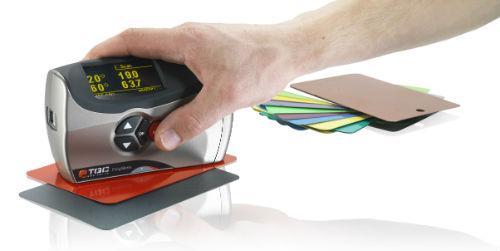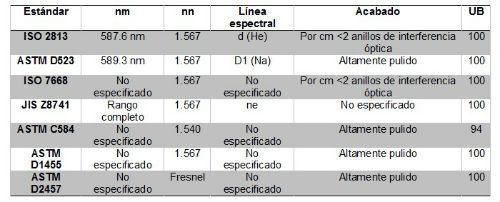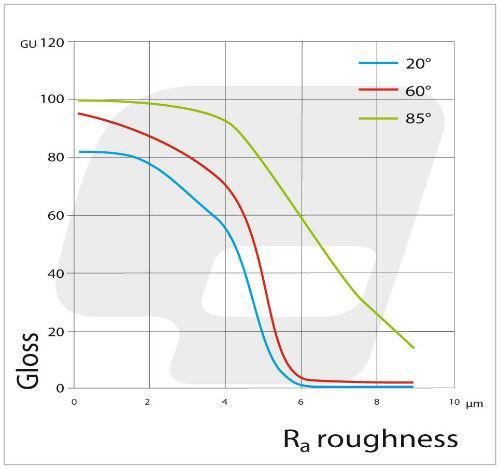A nalysis of the existing methods and standards for a correct measurement of the brightness in coated surfaces.
nalysis of the existing methods and standards for a correct measurement of the brightness in coated surfaces.
by TQC*
Aesthetic properties are becoming increasingly important in today's industry. In the twentieth century brightness measurements became a standard quality control parameter to validate the visual appearance of coated surfaces. The readings of the gloss meters (glossometers) and the strict brightness criteria, established in the finishing specifications, are these days determining appearance guidelines.
Coating manufacturers, quality control organizations and suppliers of verification equipment also specify or require very strict limits for brightness levels. But are such specifications and requirements feasible?
Glitters became popular in the 70s. German verification equipment manufacturers began to mass-produce brightness meters at affordable prices and appropriate for use on production lines. Such equipment was based on laboratory instruments used in the paper industry of the time. Due to the evolution of technology and the higher demands on visual appearance, the tolerances of the specifications of the brightness units (UB) were significantly reduced. Some instrument manufacturers claim that their glossometers offer an accuracy that does not exceed the value of 0.1 UB and the specifications for the applications usually determine a bandwidth of only 1 UB as an acceptance criterion.
Are these criteria realistic?
To answer this question it is necessary to analyze the brightness as it appears in international standards (ISO and ASTM) and as measured by reference laboratories.
To define a brightness unit it is necessary to set some reference points. The brightness reference points set out in the standards are 0 UB and 100 UB. The reference point of 0 UB corresponds to a completely opaque and matte surface with zero reflection. The reference point of 100 UB GU is based on a black or quartz crystal. The refractive index, a derivation of the change in angle when light passes from one medium to another, at a specific wavelength is used to calculate the reflectivity of a surface. This is done using the Fresnel equation.
This method seems quite solid, however, there is a flaw in the definition of the wavelength employed. ASTM and ISO standards do not agree on the wavelength of the spectral line to be used for the 100 UB reference point. The ISO standard uses the "d" line (helium), while the ASTM standard refers to the "D1" (sodium) line. This is actually a difference of only 1.7 nm, but in terms of standardization it is a major deviation that can lead to unexpected results.
Generally speaking, the use of just two benchmarks is an inconsistent basis for a standard. Additionally, the linearity between these two points is only an assumption. There is no way to verify this supposed linearity since no further reference points have been defined and therefore no access is available at this time.
A second parameter has been observed that has not been specified. The surface roughness of standard calibration plates is not part of the Fresnel equation, nor is the roughness taken into account in the aforementioned standards. Some standards specify smoothness, however, at best, roughness is designated as "highly polished surface" (how to quantify "highly"?).
However, surface roughness does affect the reflection of a surface. The gloss calibration plates used by instrument manufacturers to validate the linearity of their products are made of the same material for the entire gloss range, albeit with different surface finishes, in terms of roughness and texture.
Strictly speaking, these plates should all have the same brightness value under the Fresnel equation and standard definitions. However, when these plates are measured by a reference laboratory—such as the U.S. National Institute of Standards and Technology, NIST, or the German Federal Institute for Materials Research and Testing," they all yield different values. Therefore, the question arises: "Does the roughness superficiality affect the value of brightness?" The answer is clear: "It does affect and the effect is significant."
Table 1 shows the main parameters used in several global standards. The variance in brightness value caused by this difference can add up to several units of brightness.
Table 1: Spectral line and finishing conditions by standard

The rougher the surface, the lower the brightness, as shown in Graph 1.

Graph 1: Shows the relationship between brightness and roughness. The graph is the correlation of brightness with the value Ra (arithmetic mean surface roughness). All data are obtained from black glass plates of the same material with the same refractive index.
These two issues, the surface roughness and the wavelength of the spectral line, constitute a systematic problem in the harmonization of brightness standards, which makes it impossible to work in accordance with several standards simultaneously. The design and geometry of brightness meters is usually suitable for operation within various standards. However, the calibration of measuring equipment based on the standards currently defined causes problems, as shown in Table 1.
Not even the two main reference laboratories, NIST and BAM, are in line with each other. The NIST institute refers to the ASTM standard, while the BAM refers to the ISO standard.
Reasons for lack of agreement?
It is difficult to explain the lack of agreement between the standards. Lack of experience or knowledge could be a problem. Reviews of the relevant literature do not show any important research on brightness/reflection in contrast to surface roughness. Undoubtedly, work has been carried out in the area of coatings, but what aspects do these works cover? The veil (haze), the distinction of the image and the orange peel effect... all these important parameters, but without a defined standard reference value. Everything seems to indicate that the standard for brightness is, to say the least, debatable.
Some scientific studies have been done on the behavior of light on rough surfaces, for example, beckman and Kirchhoff's theory of scattering. However, there is no unified theory that connects Beckman and Kirchhoff's theory with the Fresnel equation. A scientific study that is responsible for investigating whether both theories can be combined could produce a definitive and univocal definition on the brightness calibration plates to reach an absolute value and thus unify the ISO standard and the ASTM standard.
In addition to uncertainty about the definitions of brightness standards, there are more things to worry about. The traceability that everyone wants in their methods is in grave danger. All certified laboratories need to regularly submit their standards for calibration and need robust traceability of reference standards. A reference standard must have at least a higher level of certainty than the calibration standard. This would involve regular annual verification of the reference standard used.
Numerous ISO 17025 certified calibration laboratories calibrate users' plates, supplied with all commercial glossometers, by verification with another commercial glitterometer. This glitterometer itself is calibrated with plates that are BAM certified. In the reference range of 100 UB BAM indicates an uncertainty of up to ±1 UB. By combining this value with the reproducibility and accuracy of the commercial glossometer used for verification, this system easily produces an error of several brightness units.
It's time to rethink the level of trust we place in these standards!
The main reference standards of bam and NIST should be examined according to their refractive index. In the last 15 years there has never been a cross-examination between these two main laboratories. Many aspects related to the brightness reference are uncertain and must be resolved, such as the correlation between roughness and brightness, the wavelength of the spectral line and mainly the supposed linearity of the calibration line.
The current situation was one of the motivations that ISO had to revise the brightness standards of ISO 2813. In order to bring the standard to a higher official level, as a working document, ISO had to conduct an interlaboratory study (ILS), also known as the Round Robin test. A selection of the main brands of commercial glitters was used for this study.
The study proved that the repeatability and reproducibility values indicated in the data sheets of the instruments used in the ILS were far from realistic. Additionally, it was found that the data on which these repeatability and reproducibility values were based were lost over time. Based on the results of the Round Robin, ISO decided to formulate new levels of reproducibility (R) and repeatability (r) in the next version of ISO2813. These levels reflect what is currently possible to achieve with state-of-the-art professional brightness meters (See Table 2.)
Table 2: Repeatability and reproducibility data for brightness proposed in the new ISO 2813 standard

Conclusion
ISO took the first step by renewing ISO2813. However, this solves only part of the problem. The main problem has to do with the fundamental standard. Currently all the data are derived from only one reference material, a piece of quartz crystal, without there being proof of the supposed linearity.
Ideally, you should develop and define a series of reliable reference materials in order to test and guarantee brightness references in a range of values, not just in one or two points. A group of references would also make it possible to prove or disprove the supposed linearity of the calibration line. Extensive scientific research is required to define the effects of roughness and wavelength in order to develop a fundamental standard that harmonizes ISO and ASTM standards and leaves no room for doubt. At best, the level of accuracy of these fundamental standards is ten times better than those of today's commercial brightness meters.
It would be very useful for industry to conduct scientific research on a global definition of brightness. It is necessary to check the feasibility and correctness of all specifications on brightness. Although brightness is a generally accepted quality control criterion of appearance in many industries, recent findings on brightness standards force us to reconsider the way we analyze the accuracy of the results obtained.
*TQC designs and produces field measurement instruments and laboratory equipment for paint and coating testing and general surface treatment (www.www.tqc.eu).

























Leave your comment